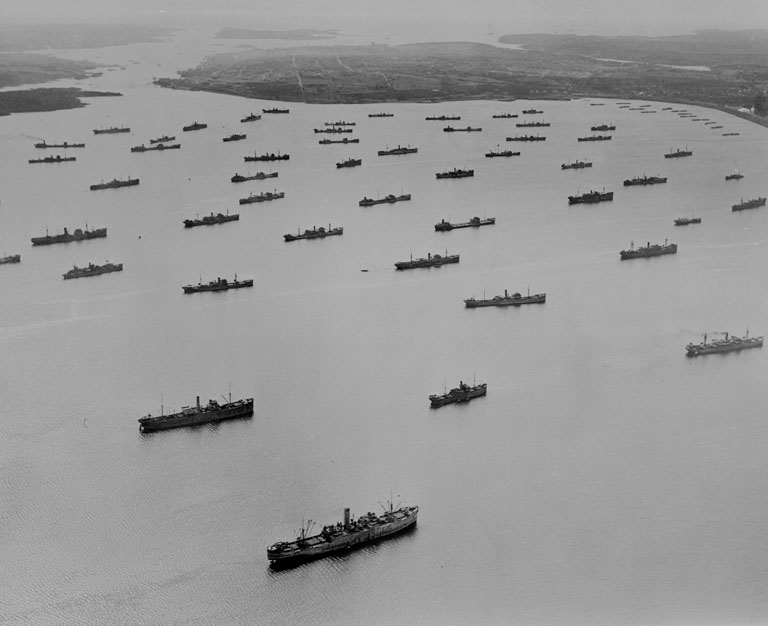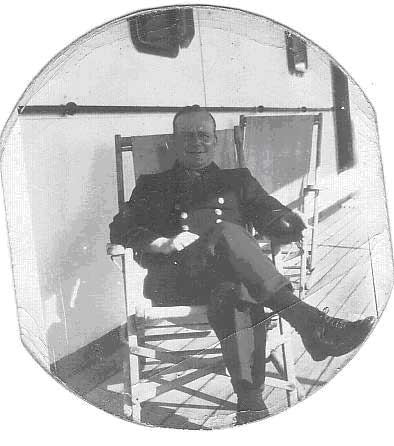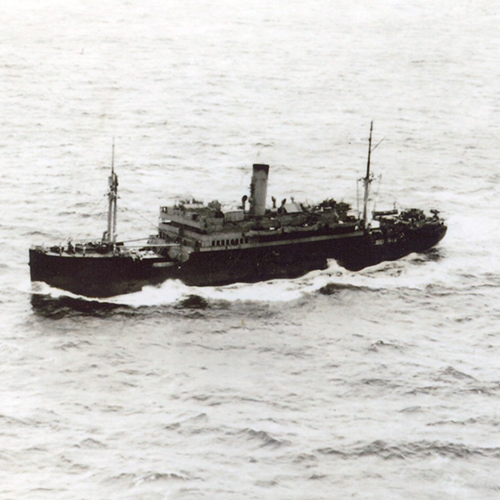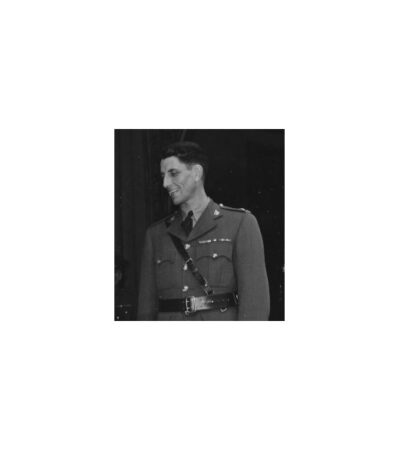Most of us have never heard of the SS Nerissa. She is an obscure ship named after an equally obscure character from the Merchant of Venice. A small passenger and cargo steamer with a re-enforced hull purpose built to deal with possible ice. Commissioned by the Red Cross Line in 1926, she was intended to plying between New York City and St. John’s, Newfoundland. A change in ownership, the Great Depression and other factors would lead her to be later shifted to a Bermuda to New York run with Furness Withy Group.
In April 1940, with the growing Total War, the SS Nerissa like many other ships in the Commonwealth was pressed into war service. She was designated an auxiliary transport. She would undergo a refit to arm her and alter her berths to allow her to carry 250 men.
With the return of German Unrestricted Submarine Warfare, the allies had quickly resurrected the convoy system used in the Great War. Destroyers and corvettes would escort gaggles of merchantmen across the North Atlantic. These convoys would form up in places like Bedford Basin, Nova Scotia, where they would be divided into groups based on their cruising speeds. Slow convoys were capable of sustaining speeds up to seven knots, whereas fast convoys travelled at between nine and thirteen knots. The Nerissa was capable of reaching a top speed of 17 knots, well above the speeds of the fast convoys. Because of this potential, it was believed she would be able to outrun the U-Boats threat. This belief held true, she would make 39 crossings during the war. This earned her a reputation as a ‘lucky ship’.
On April 21, 1941 she began a crossing from Halifax to Londonderry carrying 291 souls and 3050 tonnes of cargo. These passengers and crew were a mix of Royal Canadian Navy, Canadian Army, Royal Air Force, Merchant Navy members, medical personnel and other specialists. In addition, a small contingent of twenty civilians were on board, including Joseph and Elizabeth Lomas and their three small children, Terence, Joan and Margaret. The Nerissa would initially leave Halifax with Convoy HX 122. After a few hours she pulled away from the group and sailed on independently as her high speed allowed. She was about to pass through some of the most heavily hunted areas of the North Atlantic.

Like their fathers and uncles during the Great War, Donitz’s Unterseeboot or U-boat crews were prowling the North Atlantic and engaging in the destruction of both merchantmen and their escorts. The Kriegsmarine or German Navy hoped to isolate the United Kingdom and starve them into surrender. This meant that any ship that entered these waters was considered to be a ‘legitimate’ target of war. In the early part of the conflict these submarines would meet with a great deal of success. From July to October 1940, a period the German crews called ‘The Happy Times’, they would sink 282 allied vessels carrying critical allied war supplies. By early 1941, the British had cracked the German Naval Code and began redirecting convoys to avoid the lurking raiders. By the end of the war, the submarine service proved to be one of the most dangerous in the conflict with as little as a quarter of the crews surviving.

At around 21:40 on April 30th the Nerissa was spotted by the seasoned commander of the surfaced U-552 or “Red Devil”, Oberleutnant zur See Erich Topp. U-552 was a Type VIIC U-boat launched in the fall of 1940. During the early part of the war, most U-boat attacks were conducted at night and on the surface. In some ways it is best to think of Second World War era submarines as submersible torpedo boats. They travelled on the surface where they were able to use their diesel engine to reach speeds of almost 18 knots and to charge their batteries. Their main defense was to dive and use their battery powered electric motors to slip away. Topp was a master at his profession.
Following proper crossing protocol, the Nerissa was randomly zig zagging along her intended route. This strategy was used by the allied ships to increase the difficulty in making a good ‘firing solution’ for the attack. The torpedoes of the day did not track their target and so the launching boat had to predict where the enemy ship would be to allow the torpedo interception. Over the next couple of hours, Topp slowly closed to within one kilometer of the Nerissa. At this point, owing to sea conditions and fear of being spotted, he fired three torpedoes at the transport. At approximately 23:30, one of them detonated at the rear of the steamer.
The Marconi Men or Radio Officers, John PB Jeffery, Charles K Harrison and Harold RM Davis reacted to the explosion by rushing to their equipment and broadcasting the ship’s SOS and Dead Reckoning position— a set of coordinates that was to prove not to be exactly accurate. The devotion of these men to their duty would cost them their lives. As the ship lay crippled and its crew and passengers struggled to launch their lifeboats, U-552 launched a fourth and final torpedo which hit the steamer on her aft starboard side. Within four minutes she would break up and sink.
A Royal Air Force (RAF) Coast Command aeroplane arrived at the reported position around 03:00 and began to search for survivors. It would take until 06:00 before the Blenheim Bomber was able to sight the lifeboats and rafts. The destroyer HMS Veteran was in the area and was rapidly dispatched to pick up who they could.
Only 84 of the passengers and crew were eventually put on board the HMS Kingcup and taken to Londonderry. All together, 207 people lost their lives including the Lomas family. The SS Nerissa would be the only ship carrying Canadian troops to be sunk during the war.
Guest written by Kris Tozer for Honouring Bravery

Did you know?
After her sinking on 30 April 1941, the Atlantic northwesterly winds caused human remains from the Canadian troopship S.S. Nerissa to wash ashore onto the coast of Ireland. In 2023, William Dziadyk, author of S.S. Nerissa, the Final Crossing, visited the locations where these remains washed ashore to pay respect to those who lost their lives on the ship. Details of his trip can be found here. For more information on the work done to identify and commemorate those lost on the S.S. Nerissa, see the addendum of Dziadyk’s book (graciously provided by the author).
Sources
SS Nerissa, http://ssnerissa.com. Accessed 16 July 2025.
“The Type VIIC U-boat U-552 – German U-boats of WWII – uboat.net.” Uboat.net, https://uboat.net/boats/u552.htm. Accessed 16 July 2025.
Addendum provided by William Dziadyk author of S.S. Nerissa, the Final Crossing
Feature image: The SS Nerissa, April 30, 1941 (SSNerissa.com)






